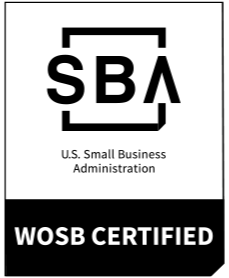Looking Inward to Build a Strong Corporate Identity
Today, most leaders understand the importance of having a strong corporate identity and strategic messaging. Doing so allows companies to stand out in a world where the average consumer is spoiled for choice, no matter what they are looking to buy. Where many leaders fall short in developing a corporate identity and strategic messaging is by conflating the idea with brand identity or how they want their products or services to be perceived.
Those with a deeper understanding of the consumer psyche assert that your external-facing brand is only one piece of the puzzle that makes up a cohesive corporate identity. A larger, and arguably more important, aspect is the story told behind the scenes. Your employees tell this story each day through their behavior, communication, and interaction with one another. These elements speak to the true values embodied by the employees, and the holistic combination tells the story of what an entire company represents.
Why does this matter? Because today’s consumers are looking beyond what a company is selling. A 2018 study conducted by Accenture found that 63% of global spend is on companies that align with the consumer’s values and beliefs.
The value of creating a strong internal corporate identity goes beyond increased loyalty. Companies that invest the upfront time and effort into doing so can expect a ripple effect throughout their organizations.
As corporations grow in numbers, become more global, and further distributed, C-suite executives face a unique set of challenges in creating and maintaining a unified corporate identity. Bridgette Heller, who has held global leadership positions at Danone, Merck, Johnson & Johnson, and Kraft, understands these challenges intimately. We recently interviewed her and discussed some of the most significant obstacles she faced throughout her career. One instance, in particular, showcases the power of a well-constructed corporate identity.
In 2012, while Heller led Johnson & Johnson’s baby products division, the Environmental Working Group (EWG) released an article highlighting certain chemicals used in baby products, arguing that they could potentially harm children. For her United States market, Heller was mostly unconcerned. “In the U.S. at that point in time, there wasn’t a lot of awareness around environmental contaminants,” she remembers.
But, she said, “the world had gone global.” China had recently gone through several scandals surrounding contamination, specifically concerning baby products. “China was really ripe for watching for anything that represented contaminates and particularly for contaminants that were associated with babies,” Heller says. “When the article came out, it made zero impact in the U.S., but somebody picked it up in China, and [suddenly] we had a global catastrophe on our hands.”
Fortunately, Heller placed an environmental sustainability expert on her global team, who dispelled the accusations that this chemical was harmful to children. Her team was able to use that expert’s messaging immediately. They also leveraged their pre-existing and cultivated relationships to get their research into the hands of two Chinese government agencies, who released statements to consumers assuring them of the safety of these Johnson & Johnson products. Thus, Heller and her team quickly and efficiently resolved an incident that could have stretched months.
So, what can we learn from this case study about corporate identity? Let’s take a closer look.
Building & maintaining a strong corporate identity takes vulnerability from leadership.
As a leader, you must understand and address the corporate identity you already have rather than the one you want. A realistic and pragmatic assessment is critical. If you have physical office space, walk the floor and observe how your employees behave and interact. If your team is more distributed or remote, make yourself available and accessible to your employees, ask them questions, and welcome feedback.
Heller maintains that this takes vulnerability. “Without the leader at least acknowledging a vulnerability in ‘I can’t know everything and I can’t do everything,'” she says, he or she sets themselves up for failure. This concept rings true, especially for global corporations working across cultural boundaries.
When Heller addressed Johnson & Johnson’s safety within the Chinese market, vulnerability was the constant element that allowed her to respond quickly and meaningfully. “The truth is, I could get the information to China, but I couldn’t deliver it.” In this case, her vulnerability allowed her the foresight to hire the right people who could handle difficult messaging to all stakeholders, should the need ever arise.
Leaders must embody their corporate identity & culture.
Once you become vulnerable and open to new information, you can understand your company’s culture and identity. This accurate understanding helps you create the foundation for revising and rebuilding the identity to become closer to the one you want. Be repetitive in your messaging. Clarity and consistency create an environment where employees can understand the company, your mission, and their role in the bigger picture.
This consistency goes beyond communication. As a leader, it is necessary to implement your organization’s mission and values into your daily life. Just as consumers want to buy from companies that hold their beliefs, employees want to work for companies and leaders that do the same. When people sign an employment contract, they entrust their leadership to behave in a way that they feel is consistent with the company’s mission and vision.
Within her division at Johnson & Johnson, Heller maintained a crystal clear culture of preparedness and forward-thinking that likely stemmed from the larger corporate identity. “The importance there was [the] readiness with statements; looking ahead to where the market’s going, as opposed to where it is today,” she says. “Had we not already had an eye towards this environmental [movement] that was emerging, had that scientist in place for more than two years…and even ready statements with our PR agency, we would have been days, weeks later in terms of being able to communicate around it.”
Heller also embodied a culture of inclusiveness that she aimed to cultivate, not only at Johnson & Johnson but throughout her career. “I tend to not walk in [to any work environment] with the same preconceptions and, frankly, often misconceptions that others will walk in with. I walk in primed to listen and primed to experience the environment.”
A strong corporate identity takes & creates trust.
Leaders who consistently uphold the values underlying their corporate identity form bonds of mutual trust with their employees. This trust causes employees to hold confidence in their leaders and allows leaders to keep faith that their employees will always represent their company in a way that aligns with their mission.
Intuitive leaders further engage trust between themselves and their employees when they offer a level of transparency. When information is accessible, employees feel respected and are more likely to hold a stronger sense of advocacy and accountability in their work.
Heller’s team had the information they needed at their fingertips to carry out their individual roles in combating the crisis they faced in China. They trusted in her transparency regarding the ingredients used in their baby products. In turn, Heller could believe in her employees’ level of commitment to managing the negative PR coming their way.
Maintaining a unified corporate identity offers time compression & value maximization.
Putting in the upfront time and effort to create the cohesive messaging and sense of culture that make up your corporate identity will save you time and maximize your value. When your values are consistent, your team clearly knows what your organization stands for, and your message is always on point. This provides fewer instances of costly downstream rework and messaging walk-backs, whether to the press or internally across leadership.
_________________________________________
Corporate identity cannot be forced. It is not a mission statement scrawled haphazardly to fill space on a website. It is not branding. Instead, identity is meticulously planned. It reflects the collective values of a team—not just values as watchwords, but embodied values that are put into practice every day. Corporate identity and strategic messaging must be carefully crafted and continuously nurtured by genuinely invested leadership.
For companies struggling to unify, Emerald One offers a solution. We tailor our Vision Watch programs to identify your organization’s challenges, obstacles, and most significant growth opportunities through our proprietary Elements of Brilliance™ methodology. We work with your team to identify relevant points of differentiation, assess current organizational behaviors and values, analyze the gap between your perceived and actual culture, define critical stakeholders and their personas, and begin building corporate messaging concepts.
Email us to learn more about how we can help you create a shared sense of advocacy and accountability among your leadership team and activate the qualities of your unique corporate identity throughout your organization. You can listen to the full interview referenced in this blog by subscribing to our Podcast, Brilliant in 20, produced in partnership with our friends at FedScoop. Subscribe for free on Apple Podcasts or Soundcloud.







